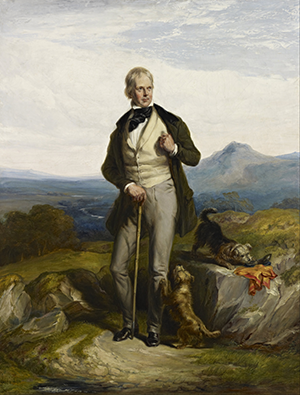September 21
Published in On this Day listing- 1866 H.G. (Herbert George) Wells, the father of science fiction and four times Nobel Prize for Literature nominee, born in Kent.
- 1832Sir Walter Scott (61), historical novelist, playwright, poet and antiquary, died from cholera. When Scott made his first and only visit to Ireland, a month-long stay in the summer of 1825, he was an internationally acclaimed poet and author of a hugely popular series of novels with a Scottish historical setting, which began with Waverley (1814). Though published anonymously—he didn’t acknowledge his authorship until 1827—it was an open secret that he was the author. He stayed in Dublin for a fortnight. The Dublin Penny Journal reported that he ‘lingered long’ before the Swift monument in St Patrick’s Cathedral, visited the recently widowed spouse of his long-time correspondent, the author Revd Charles Maturin, and ‘endeavoured to mitigate her sorrows by an act of munificent generosity’, delighted Mr Milliken, bookseller in Grafton Street, by purchasing £60 worth of books on history and antiquities, and dined with the lord lieutenant in Malahide Castle. Everywhere he went, reported the Journal, he was greeted with ‘unequivocal demonstrations of public estimation and favour’. Thereafter he spent an entire day in Glendalough, where, despite his lameness—the consequence of childhood polio—he made the ascent to St Kevin’s Bed. He went on to the Lakes of Killarney in the company of novelist Maria Edgeworth, before returning to the capital via Cork, where he was accorded the freedom of the city, and Cashel. He was not over-impressed with Killarney, the Journal reporting that it ‘failed to draw forth those expressions of enthusiastic pleasure excited by the antiquities of Glendalough and Cashel’. Finally, before his departure from Howth, he held a large dinner party for his friends to celebrate his 54th birthday.

Above: Sir Walter Scott, 1771–1832. Novelist and poet, by Sir William Allan. (Scottish National Gallery)
- 1795 In a faction fight near Loughgall, Co. Armagh, between the Protestant Peep o’ Day Boys and the Catholic Defenders, popularly remembered as the Battle of the Diamond, at least 30 Catholics were killed. That evening the Orange Society, later known as the Orange Order, was founded in the home of James Sloan, a local innkeeper.
'
















